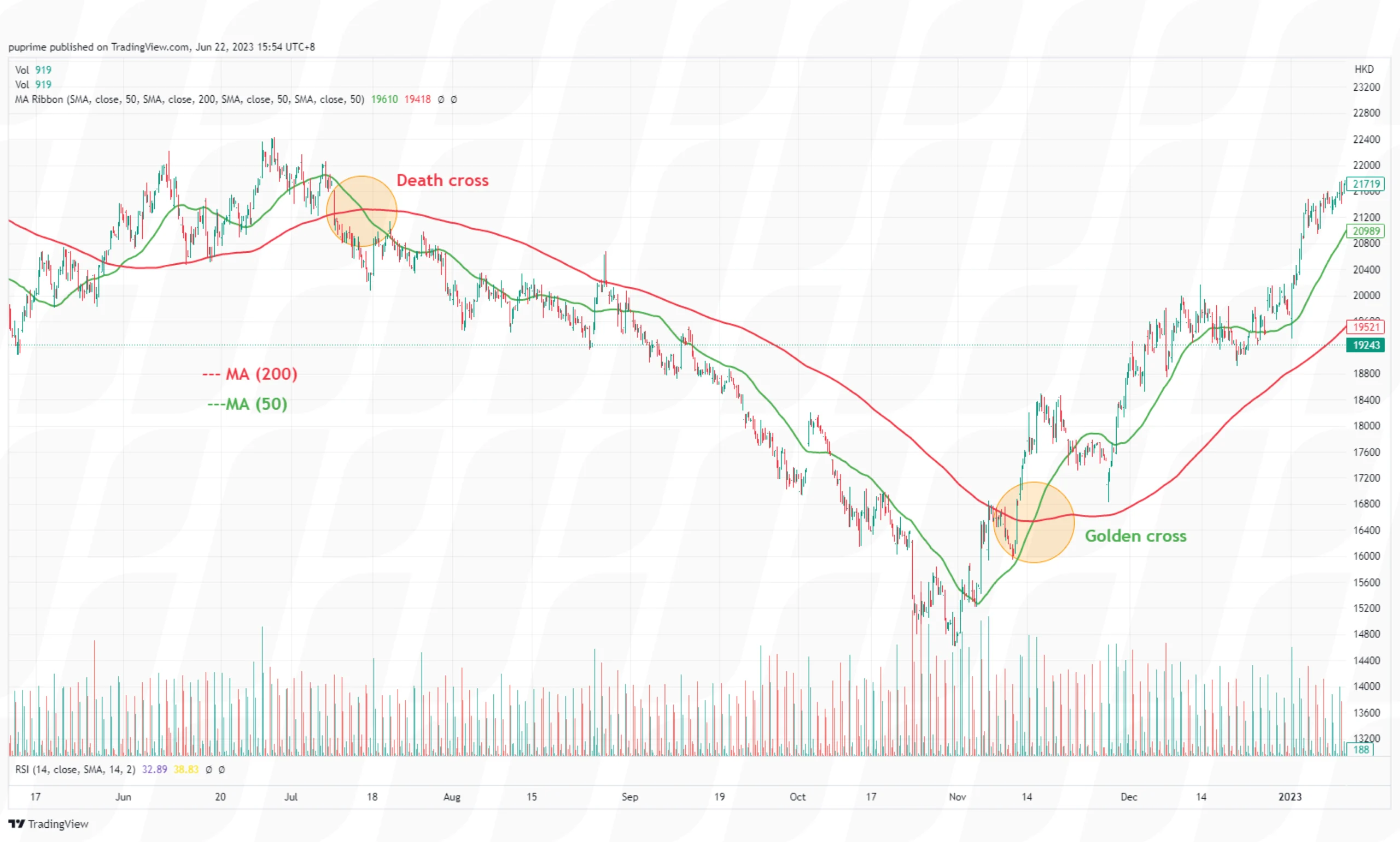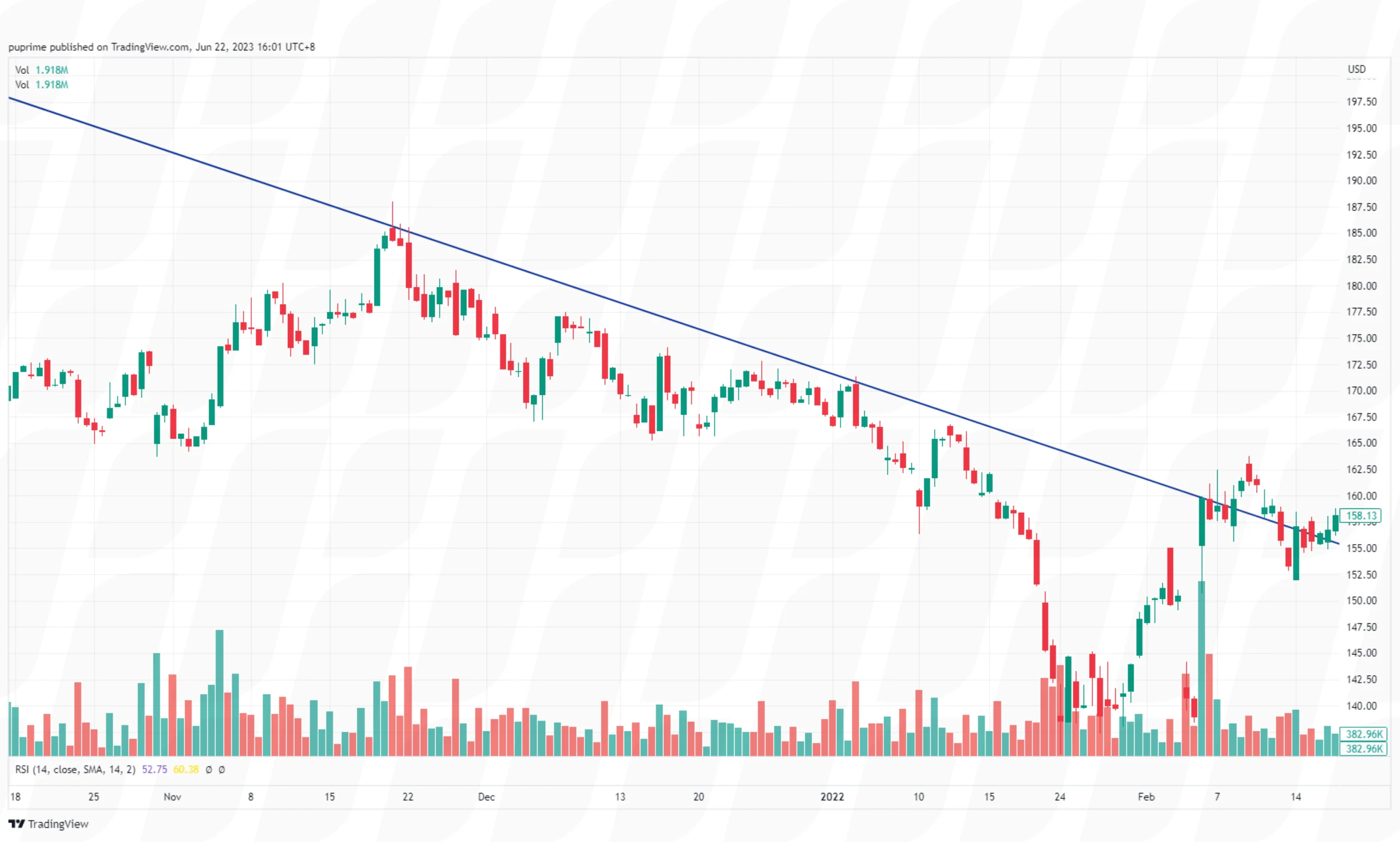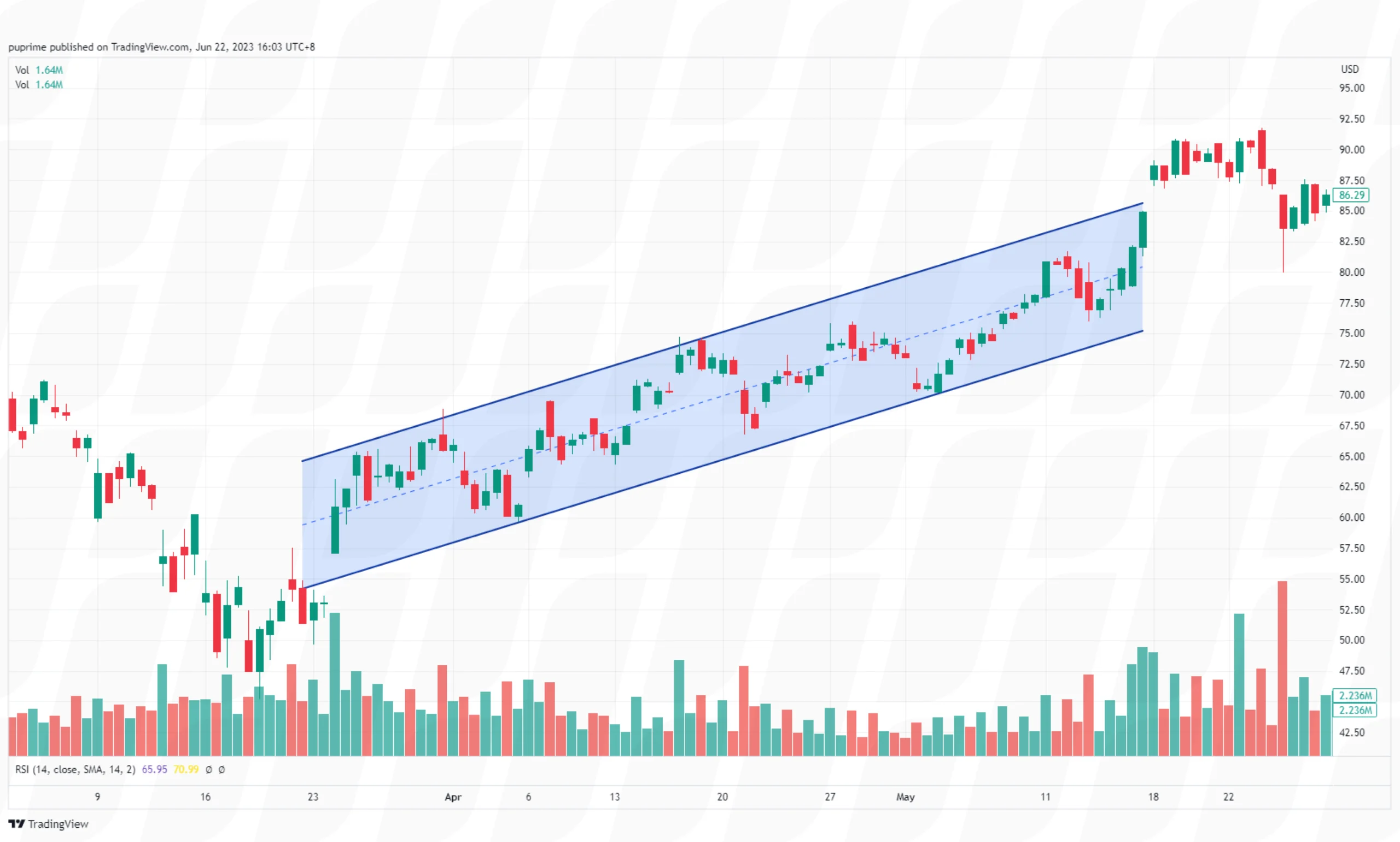-
- Trading Platforms
- PU Prime App
- MetaTrader 5
- MetaTrader 4
- PU Copy Trading
- Web Trader
- PU Social
-
- Trading Conditions
- Account Types
- Spreads, Costs & Swaps
- Deposits & Withdrawals
- Fee & Charges
- Trading Hours

The trend trading strategy is a popular strategy employed by many traders seeking to capitalise on sustained price movements in the financial markets. By learning how to identify market trends and adhering to these trends, traders aim to ride the wave of momentum and potentially generate profitable trades. In this article, we will delve into the world of trend trading strategies, exploring their key principles, techniques, and risk management considerations. Whether you are a seasoned trader or just starting out, understanding how to identify market trends and applying trend trading strategies can potentially enhance your trading experience.
The Trend trading strategy involves identifying and capitalising on market trends, which can be broadly categorised as upward (bullish), downward (bearish), or sideways (consolidation). Traders utilising trend trading strategies aim to enter trades in the direction of the prevailing trend and hold onto their positions until the trend reverses or weakens significantly. This approach is based on the assumption that markets tend to exhibit a degree of persistence in their movements.
Implementing trend trading strategies can be a powerful approach for traders looking to capitalise on sustained price movements in financial markets. Successful implementation of these strategies requires careful analysis, planning and execution. Whether you are a seasoned trader or just starting, understanding the process of implementing trend trading strategies will equip you with the knowledge and tools to navigate the markets effectively.
The first essential step in implementing trend trading strategies is accurately identifying the direction of the prevailing trend. Traders employ various technical analysis tools and indicators to assist them in this process. Moving averages, trendlines, and trend channels are common technical analysis tools used to define and confirm market trends. Additionally, momentum oscillators, such as the Relative Strength Index (RSI) or Moving Average Convergence Divergence (MACD), can help assess the strength and potential reversals of trends.
Moving averages are popular and effective tools for trend identification. By smoothing out price fluctuations over a specific period, moving averages provide a clear visual representation of the underlying trend. Traders often use the interaction between different moving averages, such as the 50-day and 200-day moving averages, to confirm trend directions.

Trendlines are simple yet powerful tools used to identify and validate market trends. By connecting consecutive highs or lows, trendlines provide a visual representation of the trend’s slope and direction. An upward sloping trendline, also known as a bullish trendline, indicates an uptrend, while a downward sloping trendline, also known as a bearish trendline, signifies a downtrend. The breakout or violation of a trendline can signal potential trend reversals.


Trend channels, also known as price channels, encompass both the upper and lower boundaries of a trend. They provide traders with a clear framework to identify and track market trends. By drawing parallel lines connecting highs and lows, trend channels help identify the trend’s strength, potential support and resistance levels, and can aid in determining optimal entry and exit points.

Momentum Oscillators, such as the Relative Strength Index (RSI) and Moving Average Convergence Divergence (MACD), are valuable tools for trend traders. Oscillators help identify overbought and oversold conditions within a trend, indicating potential trend reversals or corrections. Divergence between the price and the oscillator can also signal an impending change in trend direction. Below shows an overbought condition being identified by drawing the MACD line which moves in the Lower High trend. It is expected that there will be a retracement after the momentum oscillator moves in the lower high trend.
Once a trend is identified, traders must determine the optimal points to enter and exit their positions. One popular approach is to use breakout trading strategies, where traders enter a trade when the price breaks above a resistance level in an uptrend or below a support level in a downtrend. Another method is to wait for a pullback or retracement within the trend and enter the trade at a favourable price level. Additionally, some traders employ trend continuation patterns, such as flags or pennants, to find entry points during temporary pauses in the trend.
Risk management strategies are crucial in implementing trend trading strategies to protect capital and preserve profits. Traders should employ risk management strategies, such as setting stop-loss orders, to limit potential losses if the trade goes against their expectations. Trailing stop-loss orders can also be used to protect profits by adjusting the stop-loss level as the trend progresses. Additionally, position sizing is essential to ensure that no single trade jeopardises a significant portion of the trading capital.
Learn About The Basics Of Risk Management In Trading

Successful trend trading will require consistent testing and optimization of strategies. Traders should use historical data or backtesting tools to assess the performance of their strategies over different market conditions. By analysing the results and making necessary adjustments, traders can fine-tune their trend trading strategies.
While trend trading is a popular strategy employed by traders seeking to capitalise on sustained price movements in the financial markets, trend trading has its own set of advantages and limitations that traders must be aware of to make informed decisions and optimise their trading approach for increased profitability. Below are some advantages and limitations of trend trading strategies.
Capitalising on Long-Term Market Trends: Trend trading allows traders to potentially profit from extended price movements in the market. By identifying and riding long-term market trends, trend trading has the greater potential to generate higher profits when compared to shorter-term strategies like scalping.
Clear and Objective Entry and Exit Points: Trend trading strategies often rely on technical analysis tools and indicators to identify entry and exit points. This provides traders with clear and objective signals, reducing subjectivity and emotional biases in their decision-making process.
Reduced Time Commitment: Trend trading strategies are well-suited for traders with limited time. Once a position is established, trend traders typically do not need to constantly monitor the market or make frequent adjustments to their trades, allowing for a more relaxed trading approach.
False Starts and Whipsaws: One of the challenges in trend trading is dealing with false starts and whipsaws. Market trends can reverse or temporarily pause, resulting in potential losses or missed opportunities if trades are entered or exited prematurely.
Late Entries and Exits: Trend traders may experience delayed entries and exits compared to shorter-term traders who focus on smaller price movements. This delay can result in missing out on some initial price gains or sustaining losses before a trend reversal is confirmed.
Challenging in Sideways or Range-Bound Markets: Trend trading strategies are most effective in trending markets. During periods of consolidation or sideways movement, where no clear trend exists, trend trading can be less effective and result in frequent false signals or limited profit opportunities.
Emotional Challenges: Holding onto positions for extended periods requires trading discipline and emotional resilience. Traders may face challenges such as doubt, impatience, or the fear of missing out (FOMO) during the price action in prolonged trends, which can lead to premature exits or impulsive decisions.
It’s important for traders to understand and consider these advantages and limitations when implementing a trend trading strategy. Adapting to changing market conditions, employing proper risk management techniques, and continuously monitoring and adjusting the strategy can help overcome some of these limitations and increase the chances of success.

Trend trading strategies offer traders the opportunity to capitalise on sustained price movements and ride the momentum of financial markets. However, to navigate the complexities of trend trading effectively, it is essential to follow best practices.
Identify Strong Market Trends: Focus on identifying strong and well-established market trends in the market. Look for clear and reliable signals that indicate a robust and sustainable trend, rather than attempting to trade in choppy or uncertain market conditions.
Confirm Market Trends with Multiple Indicators: Use a combination of technical analysis tools and indicators to confirm the presence of a trend. This can include moving averages, trendlines, trend channels, and momentum oscillators. The convergence of multiple indicators can increase the reliability of trend signals.
Set Clear Entry and Exit Criteria: Establish clear rules and criteria for entering and exiting trades based on trend signals. This can include breakout levels, retracement levels, or trend continuation patterns. Having predetermined criteria helps to minimise subjectivity and emotional decision-making.
Stay Informed and Adapt: Stay updated with financial market news, economic events, and changes in market conditions. Trends can reverse or weaken due to external factors, and being aware of such developments can help you adapt your trend trading strategy accordingly.
Consider the Overall Market Context: Evaluate the broader market context and consider the influence of factors such as economic trends, geopolitical events, and market sentiment. Understanding the macroeconomic landscape can help you make more informed trading decisions and anticipate potential shifts in market trends.
Understand How Fundamental Analysis Can Help Your Trading

In conclusion, the trend trading strategy is one that offers traders the opportunity to capitalise on sustained price movements in financial markets. By accurately identifying and riding market trends, determining entry and exit points, and employing robust risk management techniques, traders can increase their chances of success. It is important to note that no strategy guarantees profits, and traders must carefully assess the market conditions, confirm trends with multiple technical analysis tools, practise effective risk management strategies, and maintain trading discipline throughout.
Start Trading CFD With PU Prime’s Trading Account

Trade forex, indices, metal, and more at industry-low spreads and lightning-fast execution.
Sign up for a PU Prime Live Account with our hassle-free process.
Effortlessly fund your account with a wide range of channels and accepted currencies.
Access hundreds of instruments under market-leading trading conditions.
